
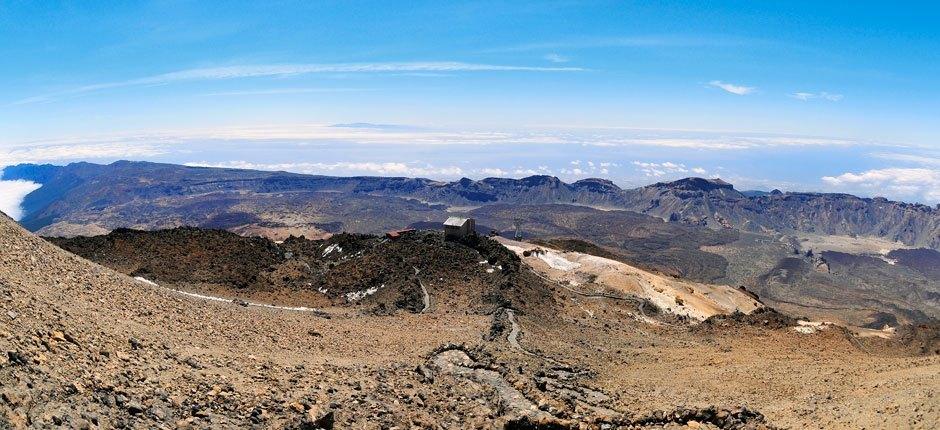

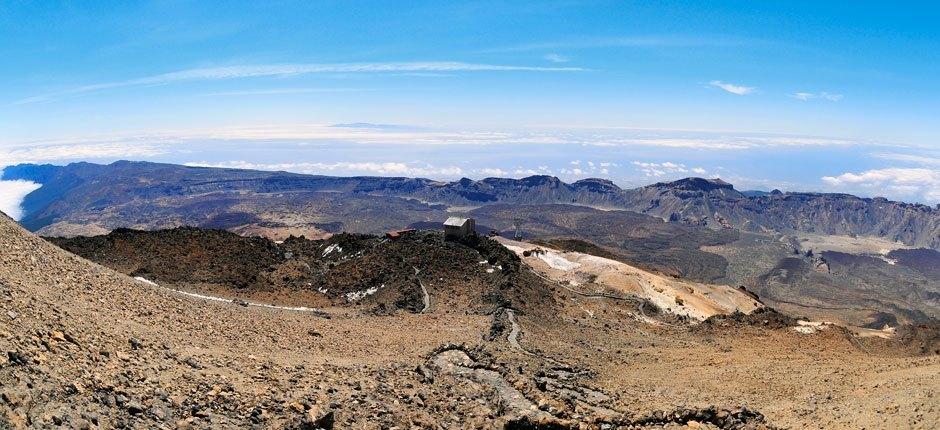
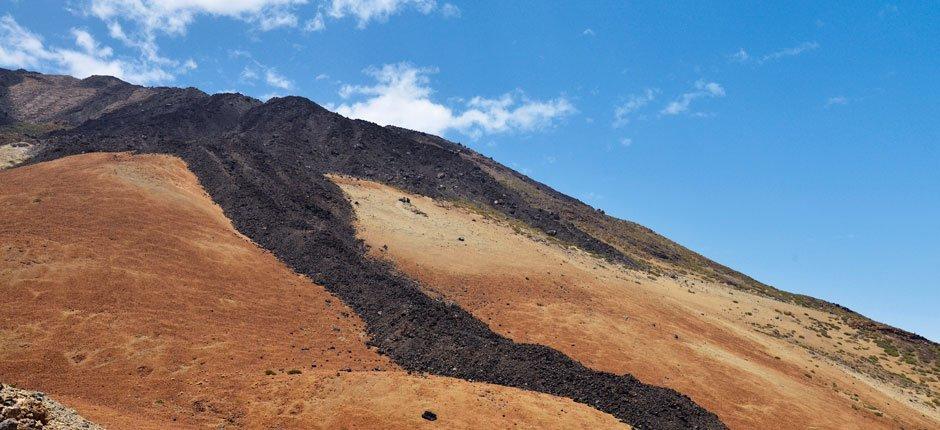

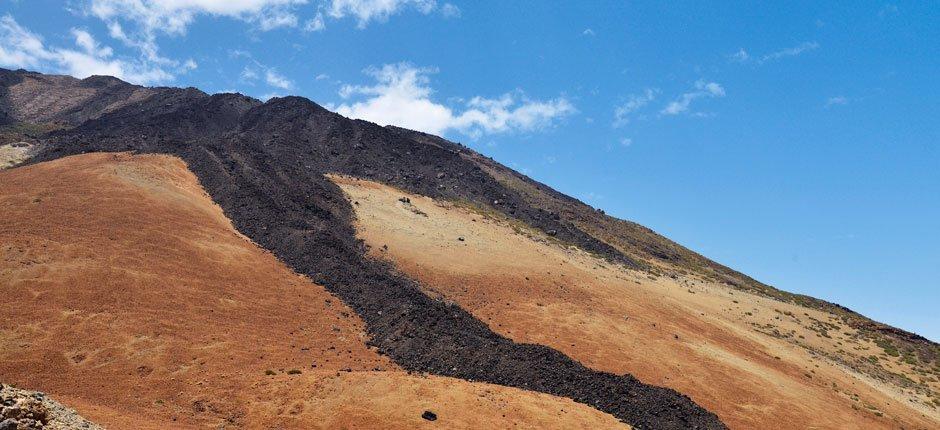
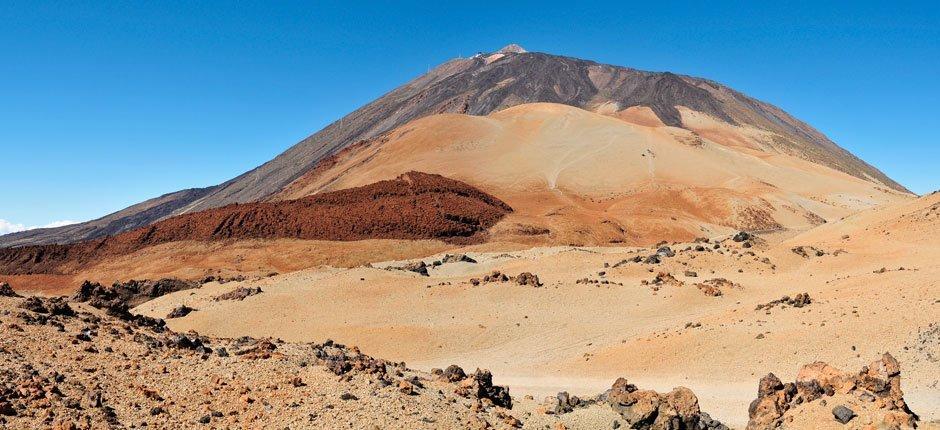

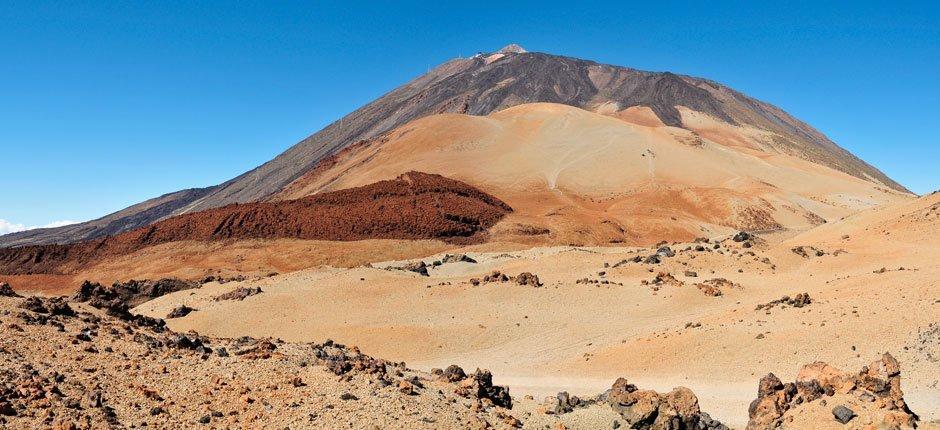
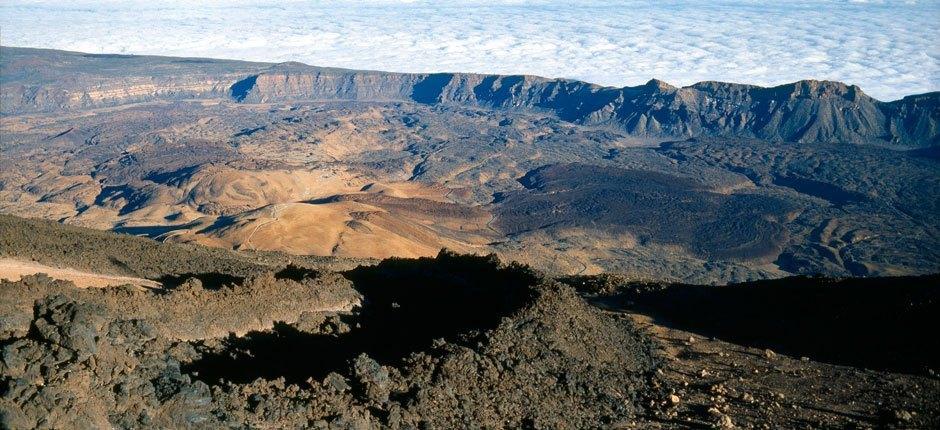

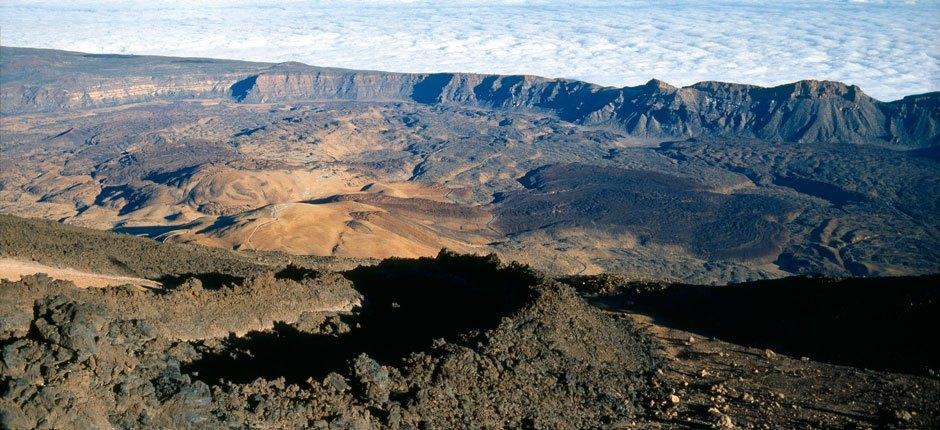


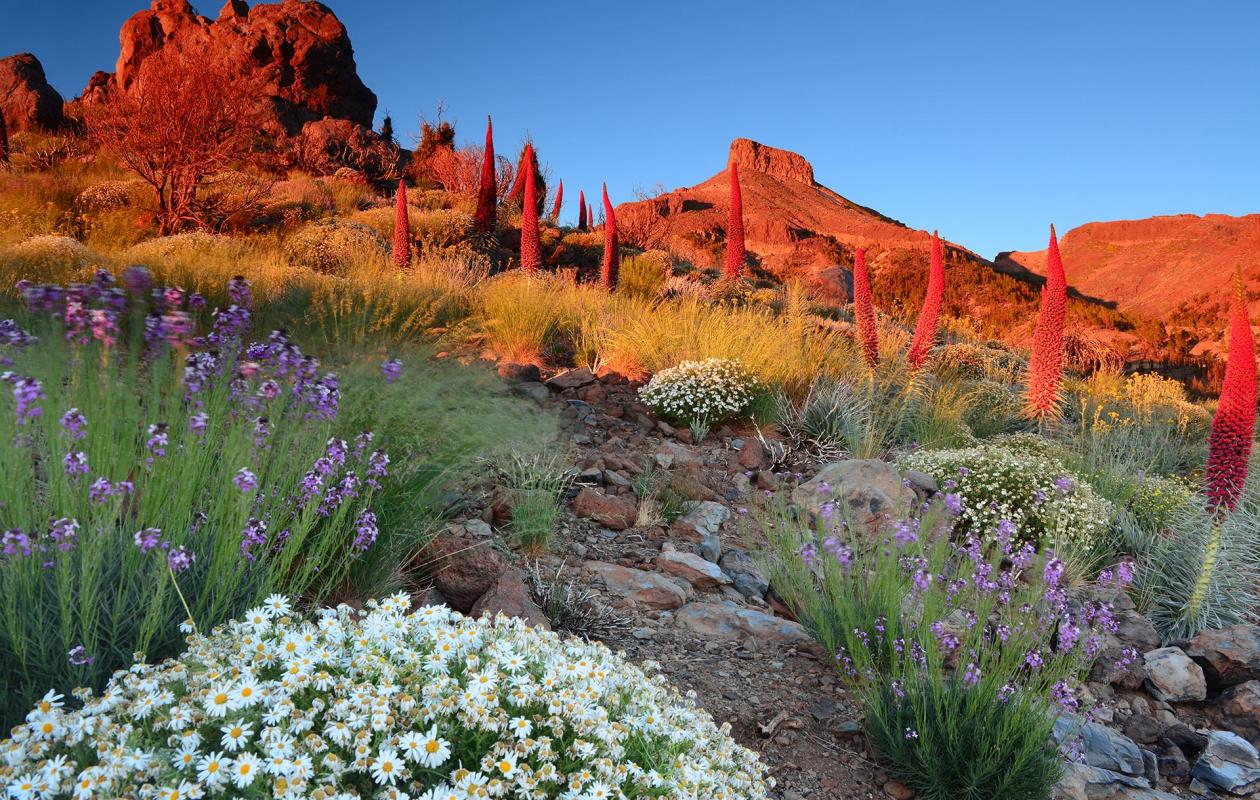
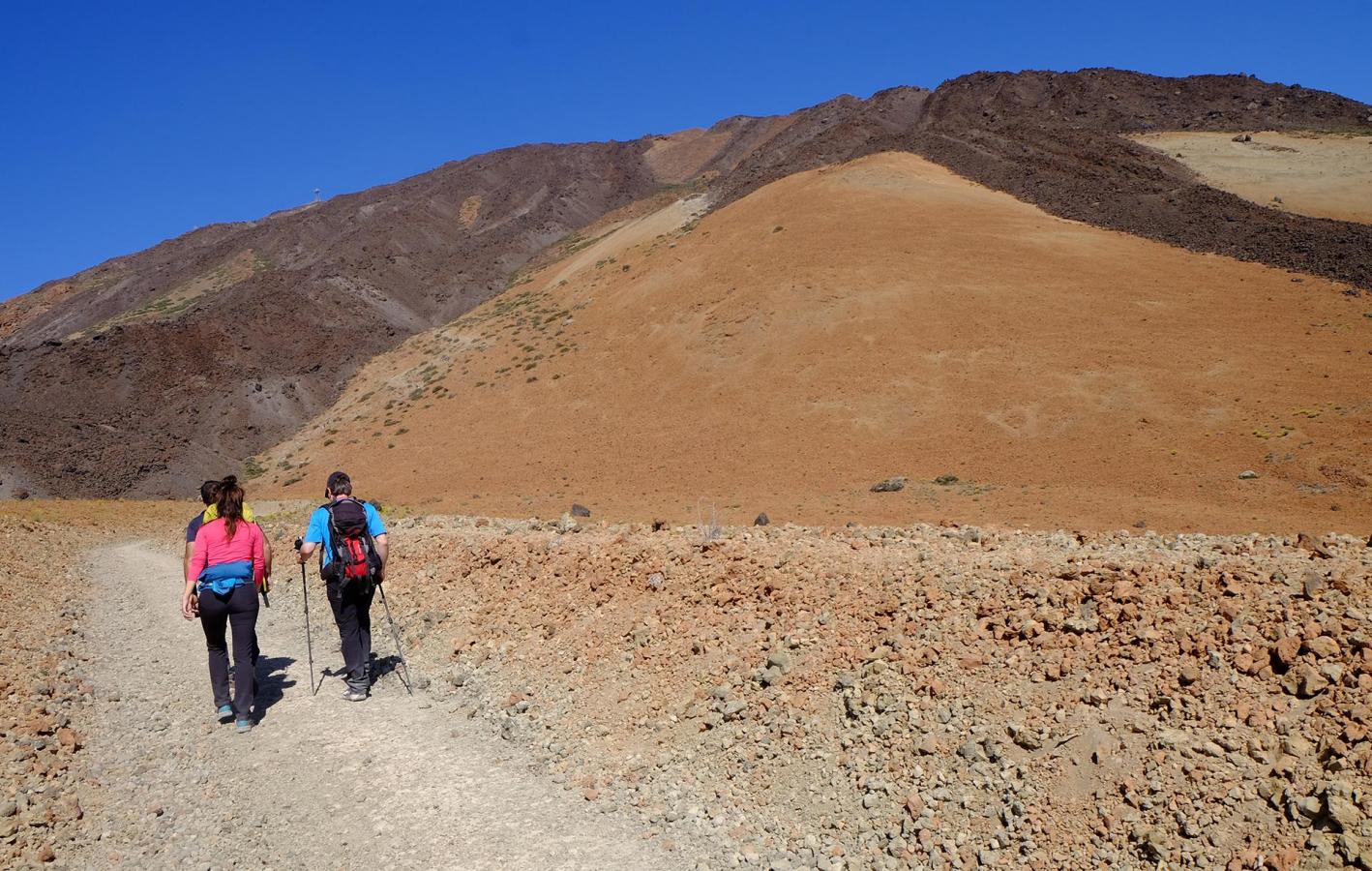

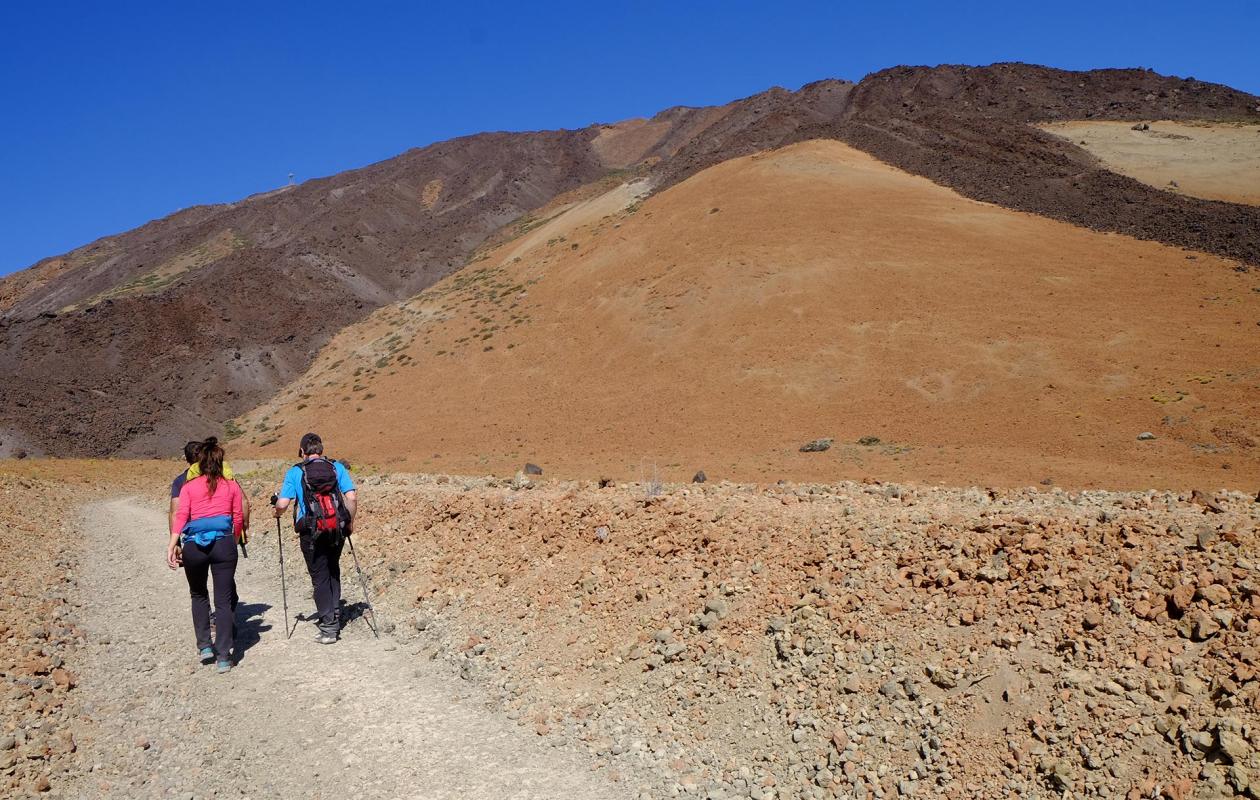
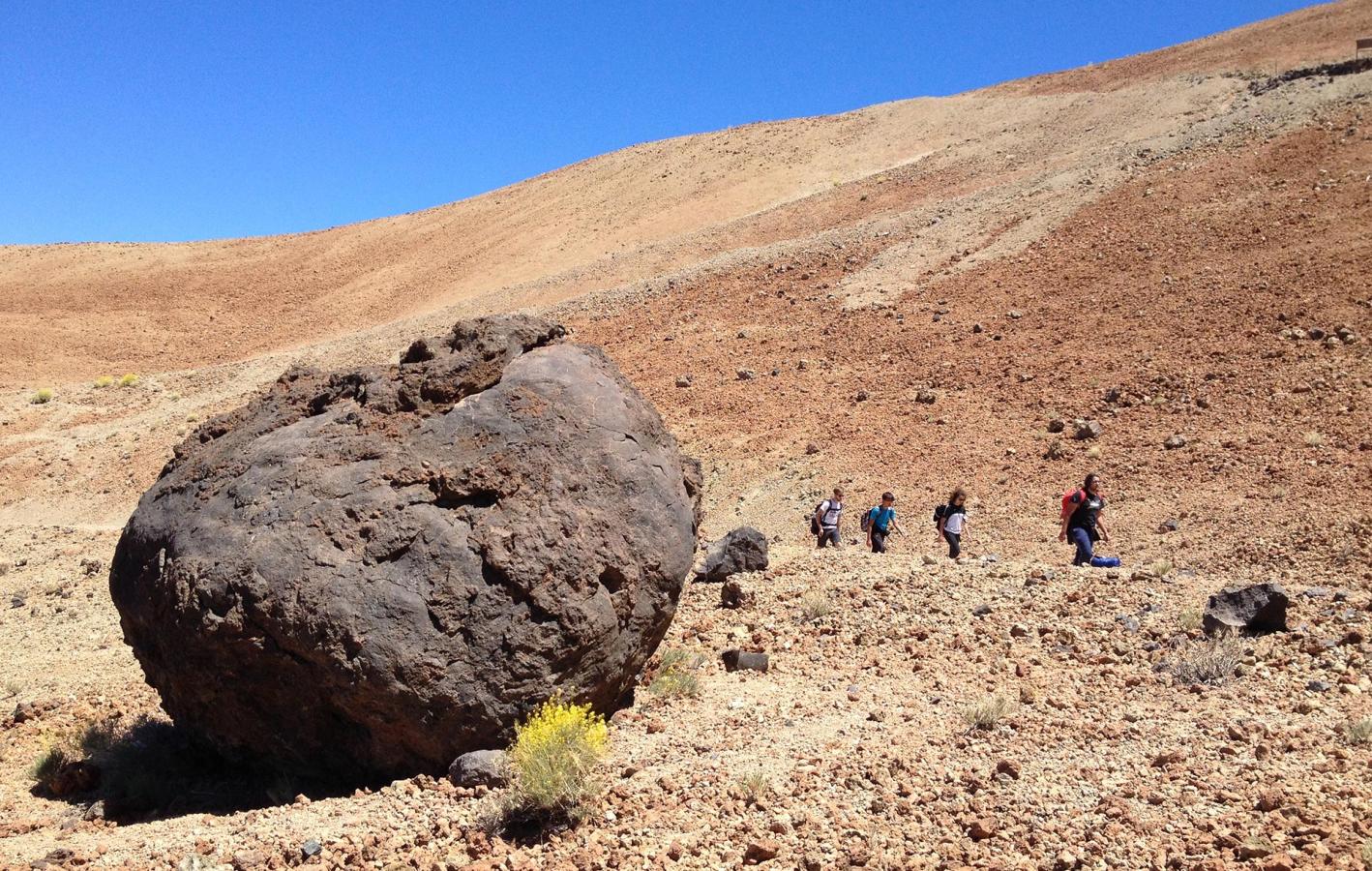

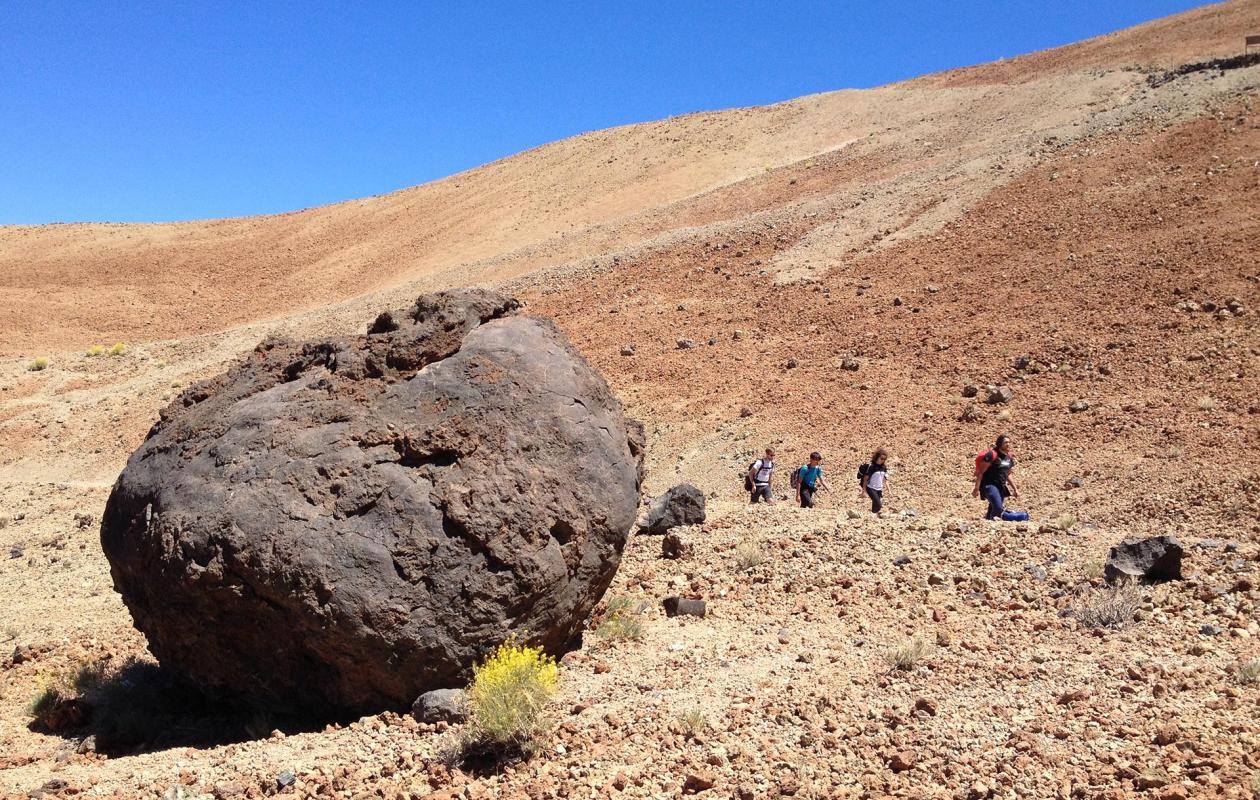
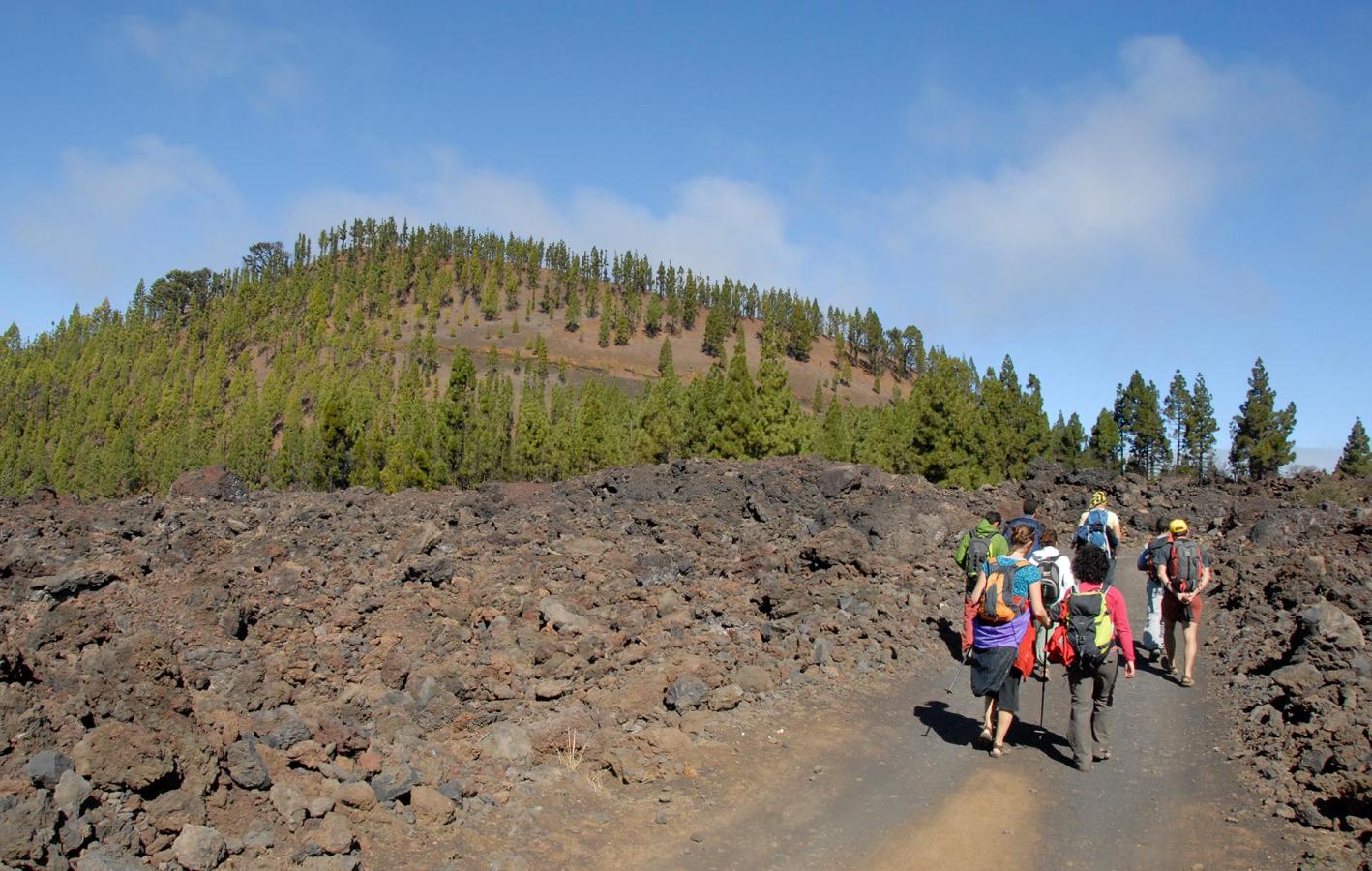

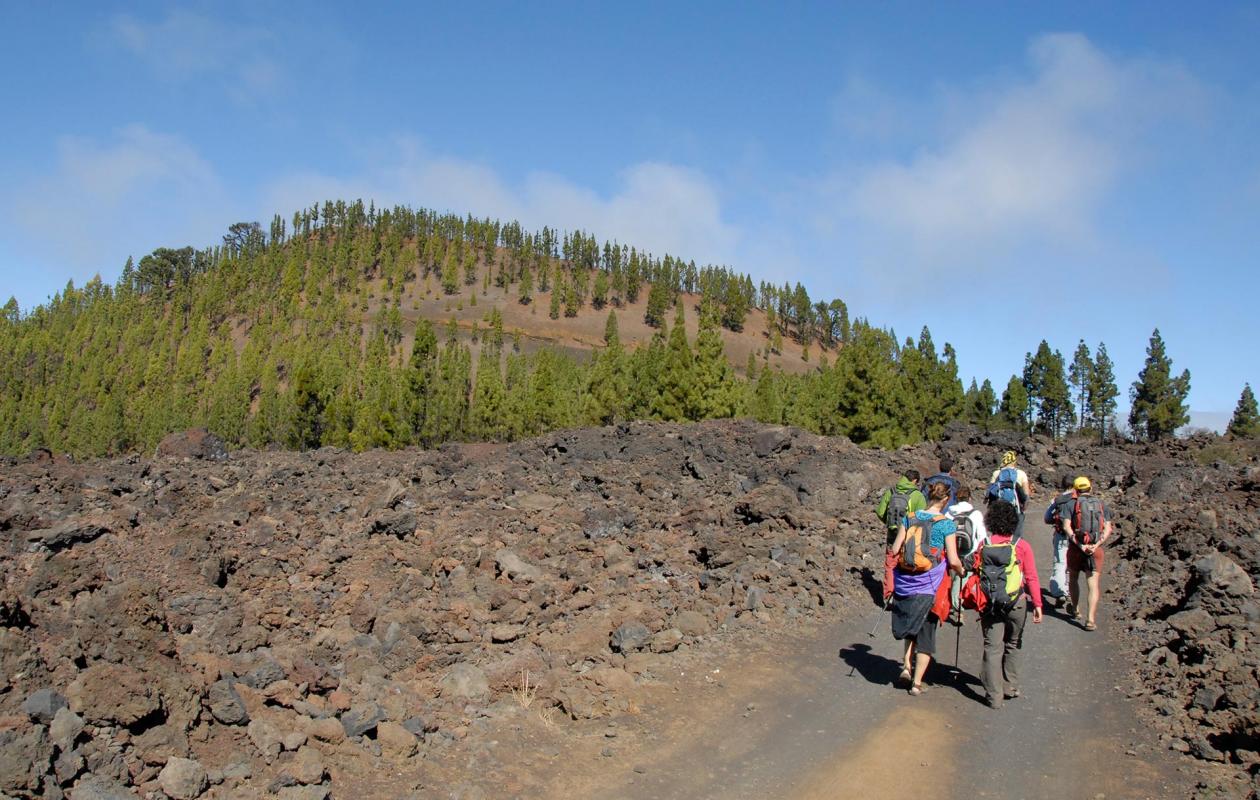
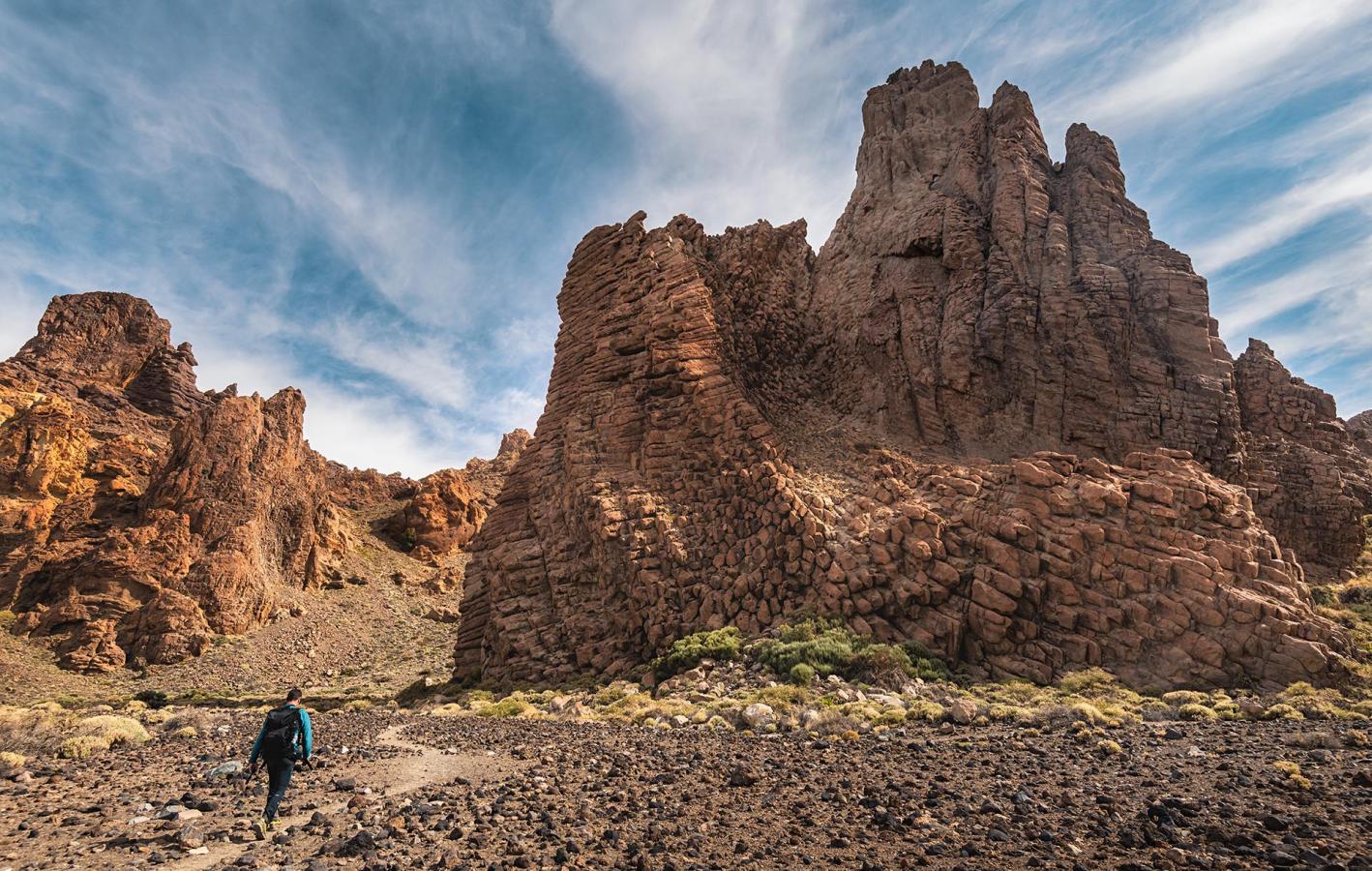

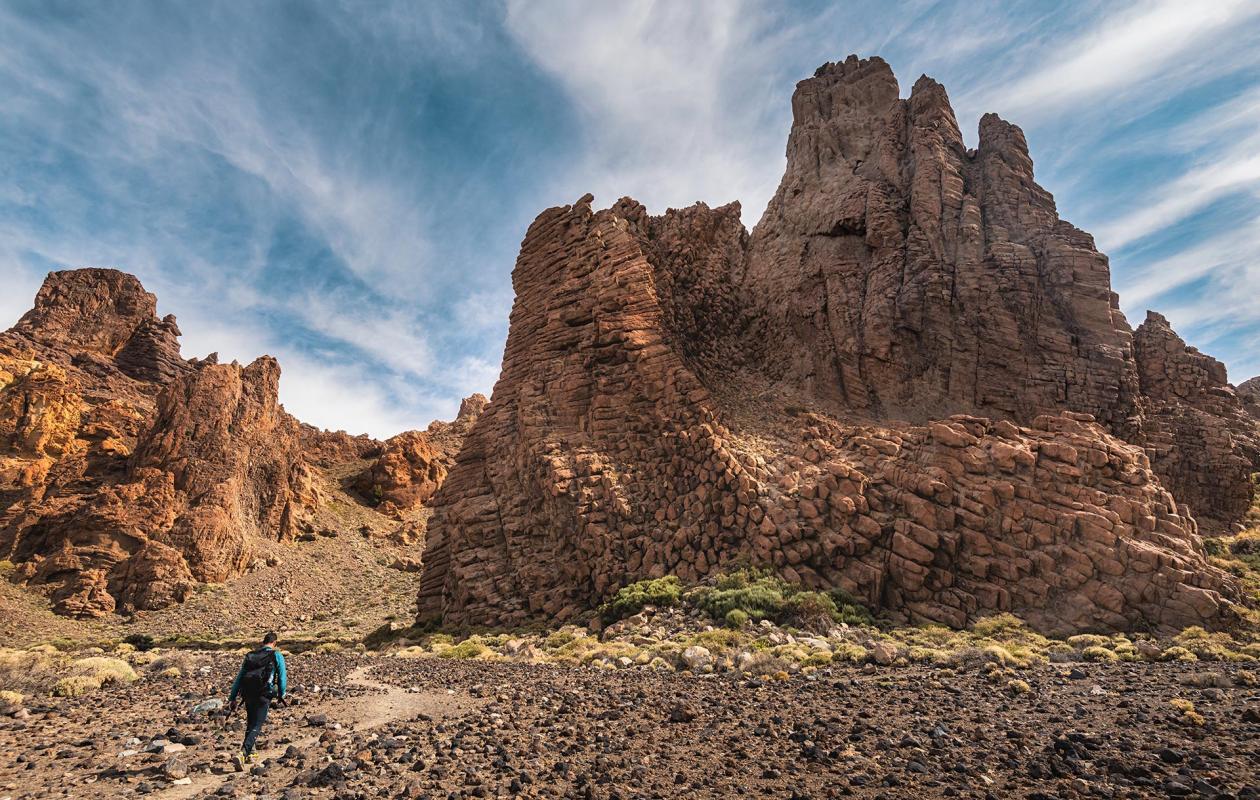
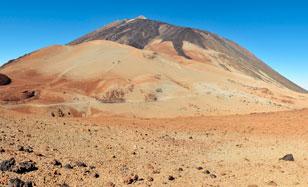
The trail begins from this mountain made of pumice stone, which used to be mined for industry and agriculture. During explosive volcanic eruptions, the gases in the magma escape like how the cork comes off a bottle of champagne and the foam created as a result, leads to the formation of the pumice stone we see today.
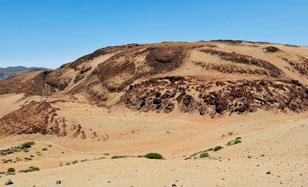
As you climb, this elevation to your right is the best example in the Cañadas of a typical lava dome. Lava domes are created by the slow extrusion of very viscous lava which hardly flows, thus accumulating and forming the dome shape that gives it its name.
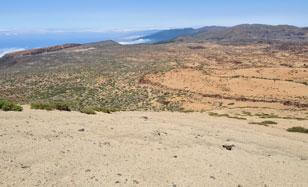
Pumice stone has many applications in agriculture and industry and was extracted from the Teide before the area was declared a National Park. These old mines have been restored to blend with the surroundings but you can still make out where pumice was extracted as the stone in these areas is lighter than in its surroundings.
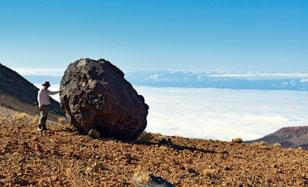
Large boulders are found near the end of this section of the trail. They resulted from accretion as they rolled down the black lava flow and were deposited at the base of the Teide. It was a sort of snowball effect – they broke off the lava ridges and rolled down the slope, accumulating new layers till they stopped at the base of the lava flow.
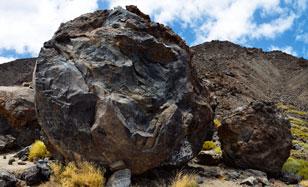
This used to be the last point to stock up on firewood during the ascent. As a result, travellers and explorers climbing to the peak would stop here to spend the night and then take on the last section of the volcano the next day. You are already at 2982 metres.
One of the large boulders in this area has an opening in its lower section which was used as a natural refuge to spend the night.
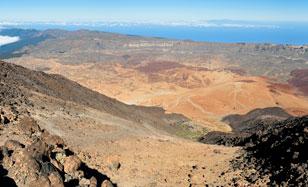
The climb to the Altavista refuge is nestled between two ridges of black lava on the Old Teide and it zigzags up a very steep slope. The ground you are walking on is at least 32,000 years old. In geological terms, this is hardly anything, but not in the case of the Teide, which has experienced volcanic activity up to the 20th century.

The refuge is in a clearing between two imposing lava ridges that are so high, that you can hardly see the peak of the Teide. This is the highest accommodation in Spain and is perfect to spend the night and then climb up to the summit to watch the sunrise. The night sky here is unbelievable – hardly 35 minutes after sunset, you can see the zodiacal light and the Milky Way.
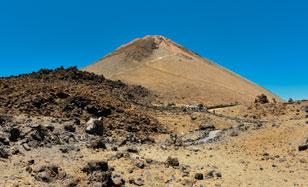
The trail from the Altavista refuge that takes you through extensive sections of malpaís or badlands ends here, and if you have asked for the necessary permission, it is also where the ascent to the peak begins. This small plateau has now been converted into the upper station for the cable car and the actual ascent to the crater begins from here.
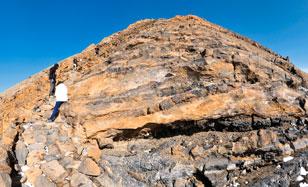
The climb to the crater begins along the wall of a large lava channel that extends all the way to the edge of the crater. You will notice that sections of this wall are completely smooth, which is the result of more fluid lava, whereas in other sections, you can see how the channel was formed by layers of lava being superimposed on each other.

This last section of the ascent has been named after Telésforo Bravo, the great geologist from the Canary Islands who concluded that this path was the best way to climb to the crater. It zigzags up the Teide along the edge of a channel on the slope, where you can see superimposed layers of lava. You can also see some fumaroles or gas vents, but these are not as significant as the ones in the crater.
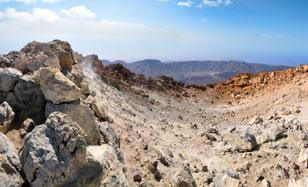
At the end of the ascent, you are in for a double treat: the panoramic view and the crater itself. You can easily see sulphur fumes coming from the fumaroles as also deposits of sulphur in the crater, which were extracted earlier but the crater is no longer open to access.
It is recommended that you do not sit but if you do, be careful as the sulphuric acid, which results from the sulphur fumes combining with water vapour, can stain your clothes.
- Never leave waste of any type lying around, including cigarette butts. Leftover food leads to a proliferation of rats and wild cats, which pose a serious threat to the fauna.
- Respect the animals. Do not bother them or feed them. If you see an injured specimen, you can call the emergency number: 112. Do not pick flowers or plants.
- Do not pick up or take away stones or any other item from the natural environment. And do not move them to pile them up into sadly famous 'towers'.
- Respect the signposting along trails. Leaving the set paths causes damage to the environment and could also be dangerous for you and anyone with you.
- It is safer to keep your pet on a lead.
- Try not to alter the peace of the environment with excessive noise (loud music, yelling, etc.).


